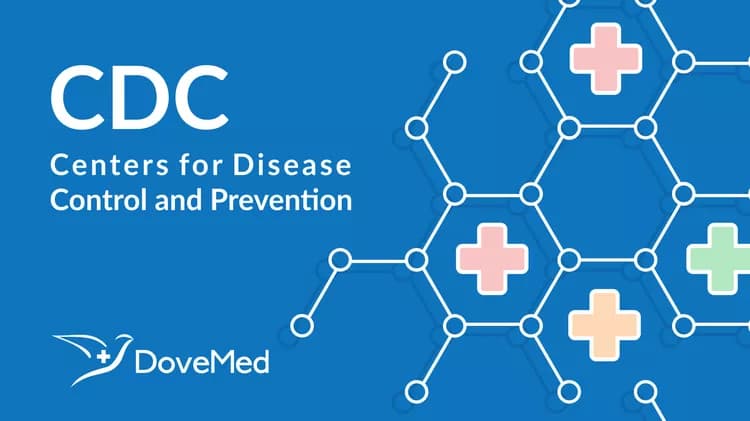
Following CDC Protocols Cuts Dialysis Bloodstream Infections in Half
Following CDC Protocols Cuts Dialysis Bloodstream Infections in Half
CDC provides tools to help all U.S. dialysis facilities reduce potentially deadly infections
Today, the Centers for Disease Control and Prevention (CDC) released results of its Dialysis Bloodstream Infection Prevention Collaborative showing a 32 percent decrease in overall bloodstream infections and a 54 percent decrease in vascular access-related bloodstream infections after CDC prevention guidelines were used. Vascular access-related bloodstream infections are those related to devices used to access the bloodstream for hemodialysis. With approximately 37,000 bloodstream infections occurring each year among dialysis patients with central lines, at an estimated cost of $23,000 per hospitalization, wider implementation of the practices in this study could help save lives and reduce excess health care spending.
Published in the American Journal of Kidney Diseases, the study looked at data reported to the National Healthcare Safety Network (NHSN) by 17 outpatient dialysis facilities and compared infection rates before and after a set of CDC interventions were consistently used. Interventions included chlorhexidine (an antiseptic for the skin) for catheter exit-site care, staff training and competency assessments focused on catheter care and aseptic technique, hand hygiene and vascular access care audits, and feedback of infection and adherence rates to staff. Facility staff were also encouraged to use antimicrobial ointment on central line exit sites.
"Dialysis patients often have multiple health concerns, and the last thing they need is a bloodstream infection from dialysis,” said CDC Director Tom Frieden, M.D., M.P.H. “These infections are preventable. CDC has simple tools that dialysis facilities can use to help ensure patients have access to the safe healthcare they deserve.”
In 2010, more than 380,000 patients in the United States relied on hemodialysis for treatment of their end-stage kidney disease. About 8 in 10 of these patients start treatment with a central line, which is a tube that a doctor usually places in a large vein in a patient’s neck or chest to give important medical treatment. When not put in correctly or not kept clean, central lines can provide a portal for germs to enter the body and cause bloodstream infections. Other forms of vascular access used for hemodialysis, such as arteriovenous fistulas and grafts, can also put patients at risk for bloodstream infections, but to a lesser extent than central lines.
Although the overall rate of hospitalization among hemodialysis patients has remained relatively stable since 1993, the rate of hospitalization for bloodstream infections has increased 51 percent. A dialysis patient is more than 100 times more likely to get a bloodstream infection from a common resistant bacteria, methicillin-resistant Staphylococcus aureus, than other people. Infections with Staphylococcus aureus can be potentially devastating and can result in hospitalization, death, and serious complications such as endocarditis (heart infection) and osteomyelitis (bone infection).
To address this critical public health issue, CDC launched a collaborative project in April 2009 to prevent bloodstream infections among dialysis patients and invited outpatient dialysis centers to participate. CDC and the participating dialysis centers worked together to develop and implement the package of interventions to prevent bloodstream infections.  The dialysis facilities tracked bloodstream infections in their patients using CDC’s National Healthcare Safety Network (NHSN), which is now being used by over 5,000 dialysis facilities nationwide for tracking and prevention of healthcare-associated infections. Â
“Dialysis patients are particularly vulnerable to infections,” said Dr. Priti Patel, head of CDC’s dialysis safety efforts. “We now know it is possible to significantly reduce the infections among dialysis patients by following CDC’s checklists and tools. If all dialysis facilities nationwide were using the CDC interventions, we could see dramatic reductions in infections and adverse outcomes in this population.”
Dialysis facilities can implement many of CDC’s recommendations by using a series of checklists and performing observations using audit tools that are currently available on CDC’s website. Additionally, CDC has released a free infection prevention course for dialysis nurses and technicians that reviews CDC recommended practices in a convenient, 1-hour self-guided internet training course that also offers continuing education credits.
Preventing bloodstream infections among dialysis patients has been identified as a national priority by the U.S. Department of Health and Human Services. Several initiatives have demonstrated the ability to reduce bloodstream infections in hospital intensive care units, but prior to the CDC Dialysis Bloodstream Infection Prevention Collaborative, there have been few similar initiatives attempted in outpatient settings.
For more information on what CDC is doing to make dialysis safer for patients, please see: www.cdc.gov/dialysis.
For more information about the study, visit: http://www.sciencedirect.com/science/article/pii/S0272638613006677.
To access CDC’s dialysis infection prevention tools, see: http://www.cdc.gov/dialysis/prevention-tools/index.html.
###
U.S. DEPARTMENT OF HEALTH AND HUMAN SERVICES
Related Articles
Test Your Knowledge
Asked by users
Related Centers
Related Specialties
Related Physicians
Related Procedures
Related Resources
Join DoveHubs
and connect with fellow professionals

0 Comments
Please log in to post a comment.